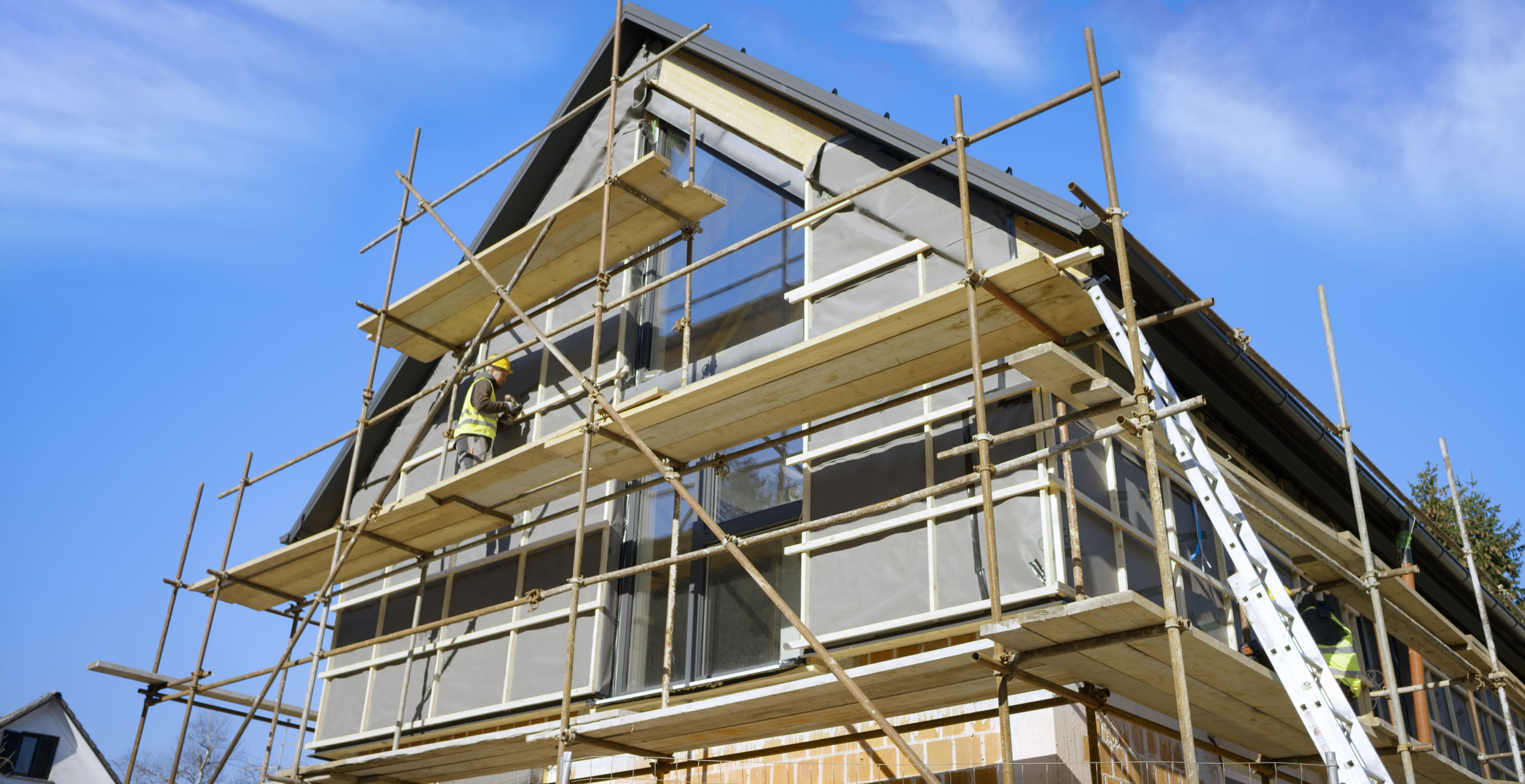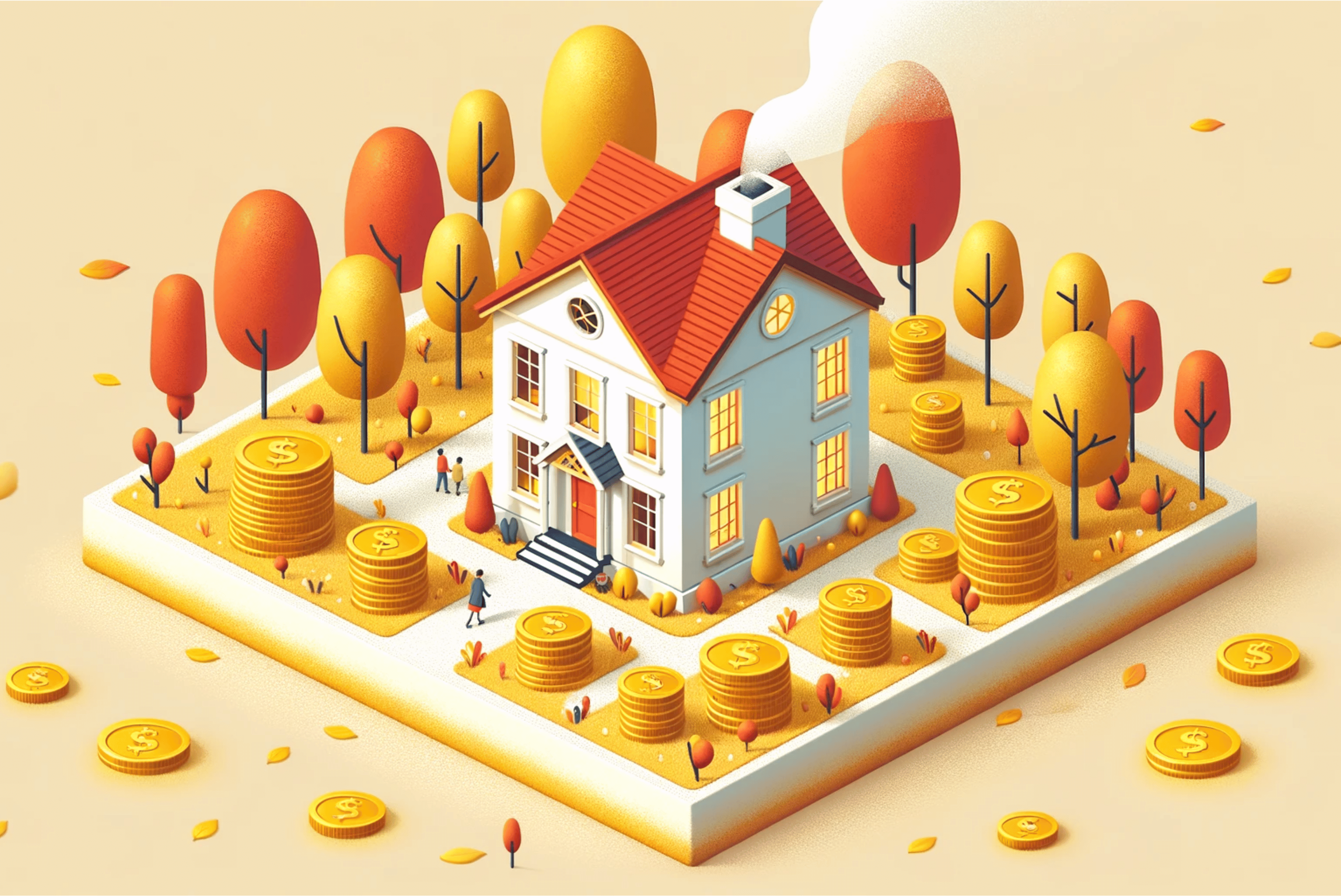.png)
Image by Flavio Brancaleone
KEY POINTS
- New properties can attract premium rents and appeal to renters wanting contemporary living spaces
- Existing properties are often located in established neighbourhoods with community amenities
- Both new and existing properties offer their own advantages and drawbacks
Property investing can seem overwhelming sometimes, full of decisions - like whether to buy an existing home and renovate to rent, or alternatively buy a new one?
Both offer their own advantages and drawbacks and will suit different investment strategies, financial goals, risk tolerance, and market conditions.
Equipping yourself with enough knowledge to make an informed decision is important, to get the full picture and avoid any oversights.
Read on to explore what each of these investment strategies can offer and what factors you should consider before moving forward with your purchase.
Advantages of buying a new property
Buying a new property can seem extra appealing, as everything appears shiny and new.
And this appeal can extend to renters, too, which is advantageous to investors, as the enhanced rental appeal could equate to higher rental yields.
It can mean less time on the rental market and potentially a reduced risk of your investment sitting unoccupied.
New builds also tend to demand less in maintenance costs, as they’re yet to weather the same wear and tear that existing properties have been subjected to.
They’ve also likely been built to current building standards, with newer appliances, and are still under the builder's warranty.
This can reduce the likelihood of unexpected maintenance costs and nasty surprises.
Additionally, new builds are advantageous for investors wanting to reduce their tax burden due to the tax relief that building depreciation can provide.
On a new home, investors can claim capital works deductions and depreciating assets.
Capital works deductions apply to any property constructed after September 15, 1987.
You can claim 2.5 percent depreciation annually until the home reaches 40 years of age.
You can also claim for depreciating assets, or more specifically, the fixtures in the home that are easily separable, like air conditioners, blinds, ceiling fans, and light fittings.
Property investors can claim tax depreciation on plant and equipment if they either bought it themselves or if it was part of the new property, and the Australian Taxation Office recognises over 6,000 depreciable assets, assigning them each a depreciation rate.
The best way to maximise these tax deductions is to engage a professional to develop a tax depreciation schedule customised to your property.
The cost of this depreciation schedule is also completely tax deductible.
There are other benefits to purchasing a new property aside from tax benefits, including customisation, modern amenities with enhanced energy efficiency and climate control, and the ability to bypass the need for any renovations.
New properties can also cater to the preferences of a growing market segment seeking contemporary living spaces and features like “zoom rooms” or office spaces.
Drawbacks of buying new
As with all investment strategies, there are drawbacks associated with buying a new property.
Purchasing off the plan means buying something that hasn’t yet been built, and wearing the risk that the property market might fluctuate during the time of construction, potentially reducing your property’s value by the time construction is complete. It’s important to note that this is dependent on market conditions and that values might also experience growth.
New properties might also involve a higher purchase price than an existing home, and the risk of unexpected construction costs also stands.
There’s also the risk that the building might be delayed due to the availability of trades and materials, so it’s important that investors are prepared in case construction takes longer than expected.

Advantages of buying an existing property to renovate
Existing properties have their own pros and cons, but throw in a renovation to get the home up to scratch in order to be leased, and things get slightly more complicated.
There is, however, one obvious benefit to purchasing an existing home that needs a bit of work - and that is the buy-in cost.
Purchasing an apartment or house that needs some cosmetic work, such as painting and flooring, can be a good way to secure a property for less.
Any property flaws can be used in the bargaining process if the sellers are open to negotiating, but beware of major defects that could be costly to remedy.
A building inspection by a qualified professional is highly recommended.
Purchasing an existing property can also be considered low-risk, as the time frame from purchase to settlement is shorter, mitigating the chances of the property market experiencing any substantial shifts in that time.
Existing properties often enjoy the benefits of being in an established neighbourhood with established amenities, schools, and community services.
And there’s also a chance that an existing property might come with an existing tenant.
Disadvantages of purchasing an existing property
Purchasing a property that needs some work can save investors thousands, but it’s important to consider what renovations need to happen to make the property appealing and comfortable for renters.
Getting professional advice on the cost of any renovations the property needs is the most accurate way to decipher how much the property will cost you as an initial total.
Financial resources aren’t the only requirement of renovating - the process also demands time to engage trades, make decisions about design and materials, and manage the project.
Additionally, depending on the age and condition, existing properties may come with unforeseen issues, such as plumbing, electrical, or structural problems, which could lead to costly repairs.
Heating, cooling, or kitchen appliances might also need replacing, adding to your outright costs.
Be aware that many states require replacement appliances in rental properties to meet minimum standards for energy efficiency.
A new energy-efficient appliance could cost considerably more than a “like for like” replacement..
While new properties enjoy the benefit of customisation, the opposite can be true for existing properties.
Structural changes can be costly, meaning that you may have to compromise on features or a layout that doesn't match your preferences, since the property was designed for previous owners.
There’s also the chance that an existing property might attract a lower rental income compared to newer properties in the area, impacting the profitability of your investment.
What is the ideal investment property for you?
Both existing and new properties offer the potential for wealth generation in the form of rent and capital growth, and both require careful consideration of a range of factors to determine whether they offer the right investment strategy for you.
New properties offer modern amenities, contemporary living spaces and can attract a premium rent, while established homes can offer a smaller buy-in cost, established neighbourhoods and sometimes immediate rental income.
Ultimately, the decision comes down to the individual’s risk tolerance, financial goals and market conditions. Consider reaching out to a property investment advisor to discuss your unique circumstances and explore the best strategy for your financial goals.
Financial Advice Disclaimer
The information provided by this platform is for informational purposes only and should not be construed as financial advice. I am not a licensed financial advisor, and any recommendations or insights should be considered as general guidance rather than specific financial advice tailored to your individual circumstances.
Always conduct your own research and consult with a qualified financial professional before making any investment decisions or financial commitments. Past performance is not indicative of future results, and all investments carry risks, including the loss of principal. Your financial situation is unique, and you should seek personalised advice to ensure that your financial decisions align with your goals and risk tolerance.
Stay Up to Date
with the Latest Australian Property News, Insights & Education.




.png?width=292&height=292&name=Copy%20Link%20(1).png)
 SIGN UP FOR FREE NEWSLETTER
SIGN UP FOR FREE NEWSLETTER

.png)






.jpg?width=1920&height=1080&name=Warning%2c%20You%20Might%20Be%20Facing%20Higher%20Taxes%20Soon%20(1).jpg)





.png?width=1920&height=1080&name=Rate%20Drops%20Signal%20BIGGEST%20Property%20Boom%20in%20DECADES%20(1).png)

.jpg?width=1920&height=1080&name=Labor%20vs%20Liberal%20These%20Housing%20Policies%20Could%20Change%20the%20Property%20Market%20Forever%20(1).jpg)
.jpg?width=1920&height=1080&name=QLD%20Slashes%20Stamp%20Duty%20Big%20News%20for%20Investors%20%26%20Home%20Buyers%20(1).jpg)
.jpg?width=1920&height=1080&name=Trump%20Just%20Slapped%20Tariffs%20%E2%80%93%20Here%E2%80%99s%20What%20It%20Means%20for%20Australia%20(1).jpg)
.jpg?width=1920&height=1080&name=Federal%20Budget%202025%20More%20Debt%2c%20No%20Housing%20%E2%80%93%20Here%E2%80%99s%20What%20You%20Need%20to%20Know%20(1).jpg)
.jpg?width=1920&height=1080&name=Australias%20Housing%20Crisis%20is%20about%20to%20get%20MUCH%20Worse%20(New%20Data%20Warns).jpg)
%20(1).jpg?width=1920&height=1080&name=Australias%20RENTAL%20CRISIS%20Hits%20ROCK%20BOTTOM!%20(2025%20Update)%20(1).jpg)
%20(1).png?width=1920&height=1080&name=Is%20Adelaide%20Still%20a%20Good%20Property%20Investment%20(2025%20UPDATE)%20(1).png)
.jpg?width=1920&height=1080&name=RBA%20Shocks%20with%20Rate%20Cuts!%20What%E2%80%99s%20Next%20for%20Property%20Investors%20(1).jpg)
%20(1).jpg?width=1920&height=1080&name=I%20Predict%20The%20Feb%20Rate%20Cut%20(My%20Price%20Growth%20Prediction)%20(1).jpg)
.png?width=1920&height=1080&name=Why%20Property%20Prices%20Will%20Rise%20in%202025%20Market%20Predictions%20(1).png)
.jpg?width=1920&height=1080&name=Why%20Investors%20Are%20Choosing%20Apartments%20Over%20Houses%202%20(1).jpg)
.jpg?width=1920&height=1080&name=Why%20Rate%20Cuts%20Will%20Trigger%20A%20Property%20Boom%20(1).jpg)
.jpg?width=1920&height=1080&name=Retire%20On%202Million%20With%20One%20Property%20(Using%20SMSF).jpg)
.jpg?width=1920&height=1080&name=4%20Reasons%20Why%20You%20Should%20Invest%20in%20Melbourne%20Now%20(1).jpg)
%20(1).jpg?width=1920&height=1080&name=Old%20Property%20vs%20New%20Property%20(Facts%20and%20Figures%20Revealed)%20(1).jpg)
%20(1).jpg?width=1920&height=1080&name=Will%20The%20New%20QLD%20Govt%20Create%20a%20Property%20Boom%20or%20Bust%20(My%20Prediction)%20(1).jpg)
%20Scott%20Kuru%20(1).jpg?width=1920&height=1080&name=Inflation%20Hits%20Three-Year%20Low%20(Will%20RBA%20Cut%20Rates%20Soon)%20Scott%20Kuru%20(1).jpg)
.jpg?width=1920&height=1080&name=How%20to%20Buy%20Investment%20Property%20Through%20SMSF_%20The%20Ultimate%20Guide%20(1).jpg)
.jpg?width=1920&height=1080&name=Victoria%20Slashes%20Stamp%20Duty%20Melbourne%20Set%20to%20Boom%20Scott%20Kuru%20(1).jpg)
.png?width=1571&height=861&name=Are%20Foreign%20Buyers%20Really%20Driving%20Up%20Australian%20Property%20Prices%20(1).png)
.jpg?width=1920&height=1080&name=The%20Single%20Factor%20That%20Predicts%20Property%20Growth%20Regions%20(1).jpg)
%20Scott%20Kuru%20(1).jpg?width=1920&height=1080&name=My%20Prediction%20On%20Rates%20%26%20Negative%20Gearing%20(Market%20Crash)%20Scott%20Kuru%20(1).jpg)

-1.png?width=1920&height=1080&name=Major%20Banks%20Cut%20Rates%20Will%20RBA%20Follow%20Suit%20(Sept%20Rate%20Update)-1.png)
%20Scott%20Kuru-1.png?width=1920&height=1080&name=Rate%20Cut%20Coming%20What%20New%20Zealands%20Move%20Means%20for%20Australia%20(Sept%20Prediction)%20Scott%20Kuru-1.png)
%20(1).jpg?width=1920&height=1080&name=Buy%20when%20the%20interest%20rates%20are%20high!%20(Why%20you%20must%20buy%20now!)%20(1).jpg)
.jpg?width=1920&height=1080&name=Carms_Revised%20Taxes%20Due%20Aug%209%20YT%20Thumbnail02%20(1).jpg)
.jpg?width=1920&height=1080&name=Carms_Too%20Little%20Too%20Late%20Aug%207%20YT%20Thumbnail01%20(1).jpg)









.jpg?width=1920&height=1080&name=Carms_Rate%20Drop%20In%20July%20Jun%2010%20YT%20Thumbnail02%20(1).jpg)
.jpg?width=1920&height=1080&name=Carms_Own%20a%20Property%20V6%20Jun%205_YT%20Thumbnail%20(1).jpg)









.png?width=1920&height=1080&name=Artboard%201%20(3).png)






.jpg?width=1920&height=1080&name=YT%20thumbnail%20%20(1).jpg)

